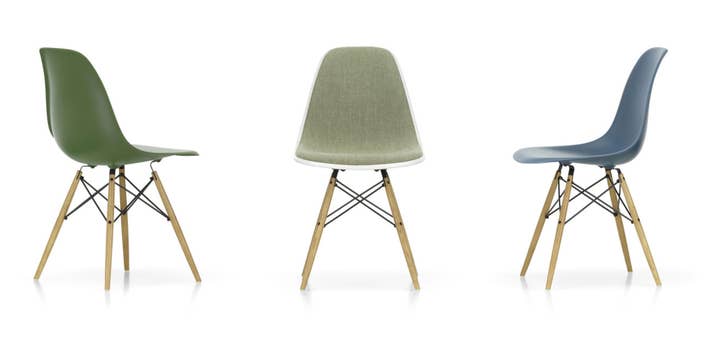Copyright changes could limit in-game props, but might defeat clones | Opinion
Kostya Lobov warns that recent EU court decisions could drastically affect what is protectable by copyright
Two recent EU court decisions could have a big impact on the world of copyright protection.
In short, they could mean that the visual appearance of some objects which are commonly used as inspiration for in-game assets or props could now be protected by copyright, whereas previously they might not have.
This has implications for the clearance of in-game assets and other content, because objects which might previously have been viewed as being low-risk (and therefore safe to use) could now be protected by copyright, and could give the owner a basis for making a legal complaint about their use in-game.
On the flipside, this change in the law could also make it easier for studios to protect some aspects of games which historically have been difficult to protect, and could be a useful tool in the fight against game clones.

How did this come about?
In the UK, and some other countries, copyright law has until now required an object to fall into one of several categories of 'copyright works' in order to be protected -- the main categories being literary, dramatic, musical and artistic works. This was a closed list. If an object didn't fall into any of the categories, it simply wasn't protected by copyright.
Some of the categories also had additional requirements. For example, 'works of artistic craftsmanship' (a sub-category of 'artistic works') had to have at least some artistic value.
The logic behind this was that copyright, which gives a very long period of protection, should be reserved for objects which are creative. Functional objects, on the other hand, should be protected by the law of designs -- a separate IP right which offers a shorter period of protection. The idea was that this would prevent manufacturers of mass-produced goods from claiming long-term protection for their products, and thus promote competition.
It was against this background that, in 2011, Lucasfilm was famously denied copyright protection by the UK courts for its Star Wars Stormtrooper helmet -- on the basis that it was a functional object (a film prop) which did not meet the criteria of a 'work of artistic craftsmanship'. The period of design protection had already expired, and the helmet could not fit within any of the other categories of copyright work.
What has changed?
The judgments of the EU court in the cases known as Cofemel and Brompton are a departure from this approach.
In the Cofemel case, the issue was whether copyright could protect part of the visual appearance of jeans and t-shirts. The court said that, in order to be protected by copyright, the object must (i) be original, meaning it is the author's own intellectual creation, and (ii) identifiable with sufficient precision and objectivity. As long as those criteria were met, it would be protected by copyright.
Importantly, the court said that EU member states could not impose any additional requirements as a pre-requisite for copyright protection, and that an object can be protected by both copyright and under the law of Designs at the same time.
This change in the law could be a useful tool in the fight against game clones
In the Brompton case, the court expanded on this and went even further. It said that even objects which have to be made in a certain way to do what they are supposed to do (in this case, the appearance of Brompton's folding bicycle was dictated in part by the fact that it has to be able to fold) could still be original, and therefore attract copyright protection for the life of the creator plus 70 years.
This is drastically different to the longstanding approach adopted in the UK and some other countries. It potentially means that vast numbers of functional, everyday objects could now be protected for upwards of 150 years, provided they were the creator's own intellectual creation and are identifiable with sufficient precision and objectivity. The Stormtrooper helmet case would, for example, probably have been decided differently if it happened today.
It also means that UK copyright law is now almost certainly incompatible with EU law. This could turn out to be a moot point, since the Brexit transition period is due to come to an end this year, but it is still relevant if the UK decides that it wants to keep its copyright laws aligned with those of the EU.
What does this mean in practice for games?
The most obvious consequence is that any studio that wants to use real-world objects as an inspiration for its in-game assets will need to consider more closely whether they are protected by copyright.
For studios which already have a legal clearance process in place, the good news is that it may not need to be changed very much. Clearance by in-house or external lawyers normally takes into account the fact that, typically, a game will be available in multiple countries, each with its own set of laws. The people who do the clearance therefore tend to err on the side of caution and avoid borderline decisions which stick too closely to the letter of the law in any one geographical area.

However, the fact remains that there are situations where the risk of getting caught out is now greater than before. Virtually any object which has been the subject of some kind of design process, including those which are mass-produced, could potentially now be protected. Furniture is a good example, particularly as the furniture industry is known for its robust approach to enforcement.
Since the Cofemel decision, there has been a flurry of similar cases, including one in the Netherlands concerning the Eames DSW chair, and an Italian case about the layout of a store. We can expect to see more of these, as designers and manufacturers test the new boundaries of their rights.
However, it's not all bad news. Another consequence is that games themselves could benefit from a higher degree of protection. For example, if the UK implements this approach, the removal of rigid categories of 'copyright works' could pave the way to protecting games in a more holistic way.
It could even bring us a step closer to protecting some more elusive attributes of games, like core mechanics and 'flow', which historically have been difficult to shield from clone-makers.
This idea is a bit more radical and is yet to be tested, but in principle it is consistent with the EU court's approach. It remains to be seen who will be the first to deploy it in practice.
Kostyantyn Lobov is a partner in the video games group at Harbottle & Lewis, which has been advising the games industry since the days of the 8-bit console.








